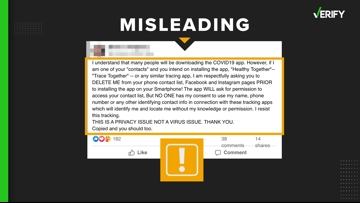Coronavirus variant Omicron was first identified by researchers in Botswana and South Africa in November 2021. Since it was discovered, the highly-transmissible variant, which is classified as a “variant of concern” by the World Health Organization (WHO), has spread around the world and continues to be the most dominant strain of the virus in the United States.
Like other variants, omicron is composed of a number of lineages and sublineages, also known as subvariants (BA.1, BA.1.1, BA.2, BA.3, BA.4, and BA.5), which have emerged over time. As of July 14, subvariants BA.4 and BA.5 currently make up 80% of U.S. COVID-19 cases, according to Centers for Disease Control and Prevention (CDC) data and the White House.
At the end of May, another omicron subvariant known as BA.2.75 was detected in India. It has since spread to at least 14 other countries, including the U.S. In July, multiple news sites (here, here, here, here, here and here) began calling BA.2.75 “Centaurus.” Science writer Ed Yong recently claimed on July 12 that “some random guy on Twitter” had come up with the “Centaurus” moniker.
THE QUESTION
Is COVID subvariant BA.2.75 officially named “Centaurus”?
THE SOURCES
THE ANSWER
No, COVID subvariant BA.2.75 is not officially named “Centaurus.”
WHAT WE FOUND
BA.2.75 is not named “Centaurus” because the World Health Organization (WHO), which is responsible for labeling COVID-19 variants using the Greek alphabet, has not given that omicron subvariant an official name.
In a July 1 tweet, Twitter user Xabier Ostale, who has over 6,700 followers, said he decided to nickname BA.2.75 “Centaurus,” after a galaxy. Centaurus A is the fifth-brightest galaxy in the sky, according to NASA.
“I have just named BA.2.75 variant after a galaxy. Its new name is Centaurus strain. Get used to it. Today, I'm in command of anything pandemic,” Ostale tweeted.
Before Ostale dubbed BA.2.75 “Centaurus” on July 1, most Twitter users who tweeted the word “Centaurus” after the subvariant was first identified in May were referencing the galaxy, an advanced search on the social media platform shows. Another advanced search after July 1 shows that multiple media organizations and other Twitter users around the world started to refer to the subvariant as “Centaurus,” like Ostale did.
RELATED: 4 Fast Facts about monkeypox
An article published on July 6 claims “Centaurus” was dubbed by researchers. But Ostale responded to a tweet that featured a screenshot of that article’s headline saying, “Credit where credit's due. Some virologists has named the BA.2.75 strain as Centaurus. Well... I'm not a virologist.”
In another tweet, Ostale said he gave BA.2.75 the “Centaurus” nickname because it would help the public better identify the subvariant rather than using letters and numbers.
“The public needs to understand with clarity what's going on with this terrible pandemic, and naming subvariants that are causing havoc in a way they can get it easily is the proper way to do it. We can't go on with lists of letters and numbers if we want the public to understand,” Ostale tweeted.
In May 2021, WHO began labeling COVID variants using the Greek alphabet. The decision was made, in part, to avoid placing stigmas in countries where variants are first reported.
“People often resort to calling variants by the places where they are detected, which is stigmatizing and discriminatory,” WHO said in a news release. “To avoid this and to simplify public communications, WHO encourages national authorities, media outlets and others to adopt these new labels.”
In an email, WHO told VERIFY it has not given BA.2.75, or other omicron subvariants, their own Greek alphabet labels because “they do not substantially differ in terms of omicron’s main characteristics,” such as “huge immune escape and preference to infect the upper respiratory tract.”
“[BA.2.75] is currently included in the omicron variant of concern (VOC) umbrella and will be monitored accordingly,” WHO said. “If this variant behaves very differently from omicron and is shown to have a public health impact, we would consider assigning it a Greek name and calling it a new variant of concern.”
On the WHO website, BA.2.75 is currently listed as an “omicron subvariant under monitoring.” According to WHO, BA.2.75 has grown more than BA.4 and BA.5 in India, but the international public health agency says the same spread has not happened in other regions around the world so far.
“As we are in the early days of the detection of this variant, scientists are closely monitoring whether this variant will grow in other settings than India,” WHO said.
BA.2.75 is not yet included in the CDC’s variant proportions data tracker. However, as of July 14, the new subvariant has been detected in at least seven states, including California, Washington, Illinois, New York, North Carolina, Texas and Wisconsin, according to an online database maintained by Raj Rajnarayanan, Ph.D., assistant dean of research at the New York Institute of Technology.
VERIFY reached out to Ostale but did not receive a response by the time of publication.
More from VERIFY: Fact Sheet: COVID-19 omicron variant












